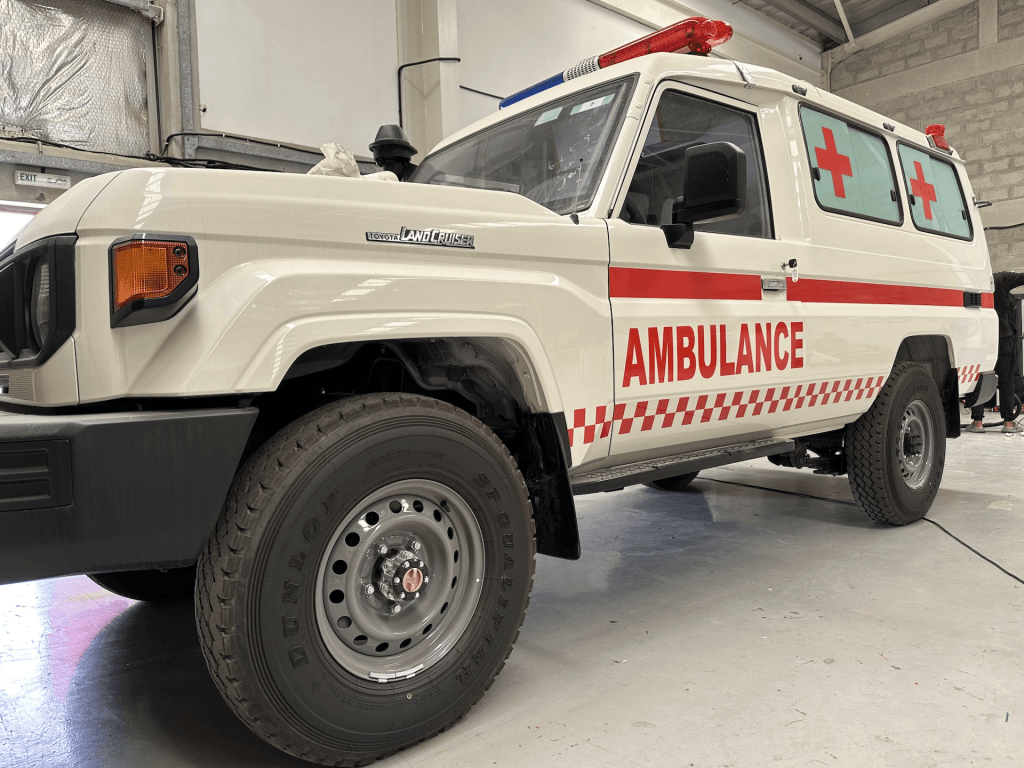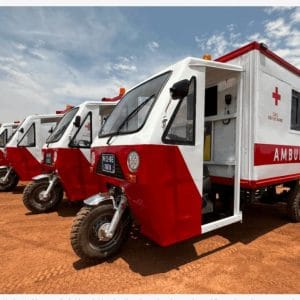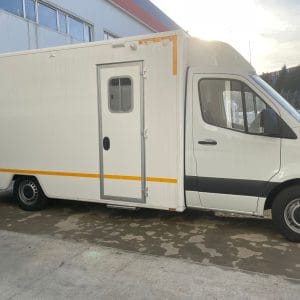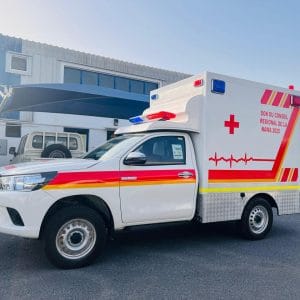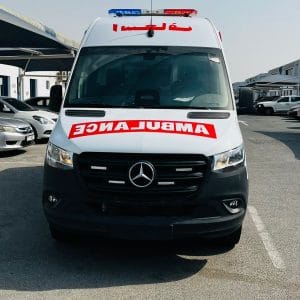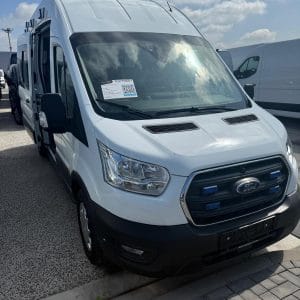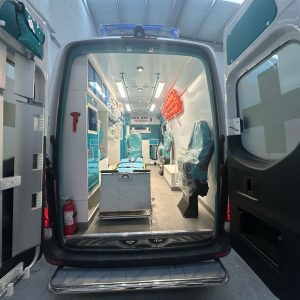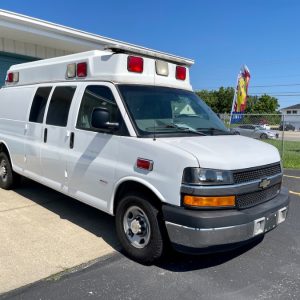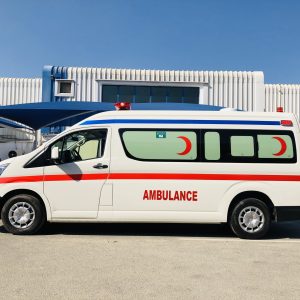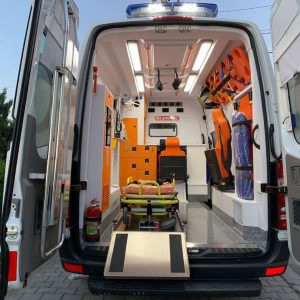Land Cruiser Ambulances; When a life hangs in the balance, the vehicle tasked with reaching them and transporting them to safety becomes more than just a mode of transport; it becomes a mobile lifeline. In the world of emergency medical services (EMS), where terrain can be unpredictable and reliability is non-negotiable, one name consistently stands out: the Toyota Land Cruiser.
Renowned for its indomitable off-road capability, legendary durability, and global serviceability, the Land Cruiser platform has been transformed into one of the world’s most capable advanced life support and basic life support ambulances. But not all Land Cruiser ambulances are created equal. The critical choices between transmission (automatic vs. manual), fuel type (almost exclusively diesel), and medical configuration (BLS vs. ALS) define its mission profile.
This guide will navigate the rugged landscape of Land Cruiser ambulance types to help you understand which configuration is the right tool for the job.
Why the Toyota Land Cruiser is an EMS Icon
Before we dive into the types, it’s essential to understand why this vehicle is so revered for ambulance conversion.
- Unmatched Reliability: Built for some of the most inhospitable places on Earth, the Land Cruiser is engineered for relentless performance. Its simple, overbuilt components are designed to keep going long after other vehicles have failed.
- Legendary Off-Road Prowess: With a robust 4×4 system, high ground clearance, and excellent approach/departure angles, it can reach patients in remote villages, construction sites, desert dunes, or mountain trails that are inaccessible to standard van-style ambulances.
- Global Parts & Service Network: Toyota’s vast global network means that finding parts and qualified mechanics is feasible almost anywhere, minimizing downtime—a critical factor for emergency services.
- Durability and Longevity: The Land Cruiser’s chassis and body are built to withstand decades of abuse. This makes it a sound long-term investment for any EMS organization.
The Heart of the Machine: Diesel Manual & Automatic Transmissions
The drivetrain is the core of any ambulance, and for Land Cruisers, the conversation almost always starts with diesel.
Diesel Power: The Unquestioned Choice
You will be hard-pressed to find a gasoline-powered Land Cruiser ambulance. Diesel is the standard for several compelling reasons:
- Torque: Diesel engines produce immense low-end torque, which is essential for carrying heavy ambulance loads, climbing steep grades, and maintaining momentum on challenging terrain.
- Fuel Efficiency: Diesel is significantly more fuel-efficient than gasoline, a major operational cost advantage, especially for agencies covering vast, remote areas.
- Durability and Longevity: Diesel engines are famously long-lasting, often clocking hundreds of thousands of miles with proper maintenance.
- Safety: Diesel fuel is less volatile than gasoline, presenting a lower flammability risk—a crucial safety consideration.
The Great Debate: Automatic vs. Manual Transmission
This is one of the most significant decisions for an EMS fleet manager.
1. Automatic Transmission
The modern choice for most emergency services, offering significant operational advantages.
- Pros:
- Ease of Use: Allows the medic/driver to focus entirely on the road and patient care without the distraction of shifting gears.
- Faster Response: Smooth, quick shifts can shave valuable seconds off response times in urban or mixed environments.
- Driver Accessibility: Easier for a wider range of staff to operate proficiently, reducing training overhead.
- Traffic Fatigue: Much less physically demanding in stop-and-go traffic.
- Cons:
- Cost: Automatic transmissions are typically more expensive to purchase and can be more complex and costly to repair.
- Perceived Control: Some veteran off-road drivers prefer the precise control of a manual gearbox in extreme low-speed technical terrain.
2. Manual Transmission
The traditionalist’s choice, still highly valued for specific applications.
- Pros:
- Total Control: Offers the driver maximum control over gear selection for engine braking on descents or precise power application on rocky climbs.
- Durability & Repairability: Manual transmissions are generally simpler mechanically, often seen as more robust and easier to fix in remote locations with limited specialist tools.
- Lower Cost: Typically a cheaper initial option and less expensive to rebuild.
- Cons:
- Driver Demand: Requires more skill and concentration from the driver, which can be a distraction from medical duties.
- Slower in Traffic: Constant clutching and shifting in urban environments can slow progress and increase driver fatigue.
Verdict: For most modern EMS operations, especially those with mixed terrain, the automatic transmission is the preferred choice. However, for agencies operating in extremely remote, technically challenging environments where ultimate driver control and field repairability are paramount, the diesel manual configuration remains a valid and powerful option.
The Level of Care: Basic Life Support vs. Advanced Life Support
The medical configuration inside the Land Cruiser is what truly defines its purpose.
Basic Life Support (BLS) Ambulance
A BLS Land Cruiser ambulance is designed for patient transport and non-invasive care.
- Mission: Transporting patients who are stable or require minimal monitoring. Often used for inter-facility transfers, discharge-to-home, or responding to non-life-threatening emergencies in remote areas.
- Key Equipment:
- Basic first aid and trauma supplies (bandages, splints, cervical collars)
- Oxygen administration equipment (tanks, masks, nasal cannulas)
- Automated External Defibrillator (AED)
- Suction unit
- Patient monitoring (basic blood pressure cuff, pulse oximeter)
- Stretcher and patient seating.
- Crew: Typically staffed by Emergency Medical Technicians (EMTs) or the equivalent.
Advanced Life Support (ALS) Ambulance
An ALS Land Cruiser is a fully-equipped mobile emergency room, designed to provide critical, life-saving interventions on scene and during transport.
- Mission: Responding to the most critical emergencies: cardiac arrest, major trauma, respiratory distress, etc. It’s about bringing the hospital to the patient.
- Key Equipment (Includes all BLS equipment, plus):
- Advanced Cardiac Life Support (ACLS) drugs: A full suite of emergency medications (epinephrine, amiodarone, etc.).
- Advanced Airway Management: Equipment for endotracheal intubation, supraglottic airways, and portable ventilators.
- 12-Lead ECG Monitor/Defibrillator: For continuous cardiac monitoring, pacing, and synchronized cardioversion.
- IV Therapy: Equipment for establishing intravenous and intraosseous access for fluid and drug administration.
- Blood Glucose Monitoring.
- Crew: Staffed by highly trained Paramedics or Advanced EMTs.
The choice between a BLS and ALS build is fundamental and depends entirely on the service’s mandate, funding, and the clinical level of its staff.
Key Features to Look For in a Land Cruiser Ambulance
Beyond the drivetrain and medical level, consider these critical conversion features:
- High-Roof Conversion: Essential for allowing medical personnel to stand and work effectively over the patient.
- Robust Electrical System: A dual-battery system with an intelligent isolator is mandatory to power all medical and emergency equipment without risking a drained starter battery.
- Inverter: A pure sine wave inverter provides clean AC power for sensitive medical devices.
- Climate Control: A dedicated, powerful secondary air conditioning and heating system for the patient compartment is non-negotiable for patient comfort and safety.
- Safety & Lighting: Includes full LED emergency light bars, scene lights, and interior lighting. The chassis should be equipped with a modern ABS system and stability control.
- Storage: Intelligent, secure, and easy-to-access storage solutions for dozens of different pieces of equipment are a hallmark of a quality conversion.
Conclusion: Matching the Vehicle to the Mission
The Toyota Land Cruiser ambulance is not a one-size-fits-all solution, but rather a supremely adaptable platform. The ideal configuration is a direct reflection of its intended mission:
- For urban and mixed-terrain ALS response, a diesel automatic provides the perfect blend of speed, comfort, and capability.
- For extreme remote-area rescue and access, a rugged diesel manual might be the ultimate expression of control and reliability.
- For non-critical patient transport and BLS care in challenging environments, a simpler automatic or manual BLS configuration offers a cost-effective and durable solution.
Whether it’s navigating crowded city streets or forging a path where no road exists, the Land Cruiser ambulance stands ready. By carefully selecting the right combination of transmission, fuel type, and medical level, emergency services around the world can deploy a lifeline that is as reliable as it is capable, ensuring that critical care is never out of reach.


